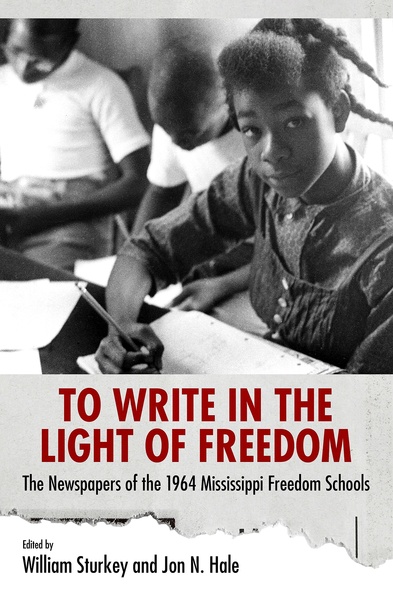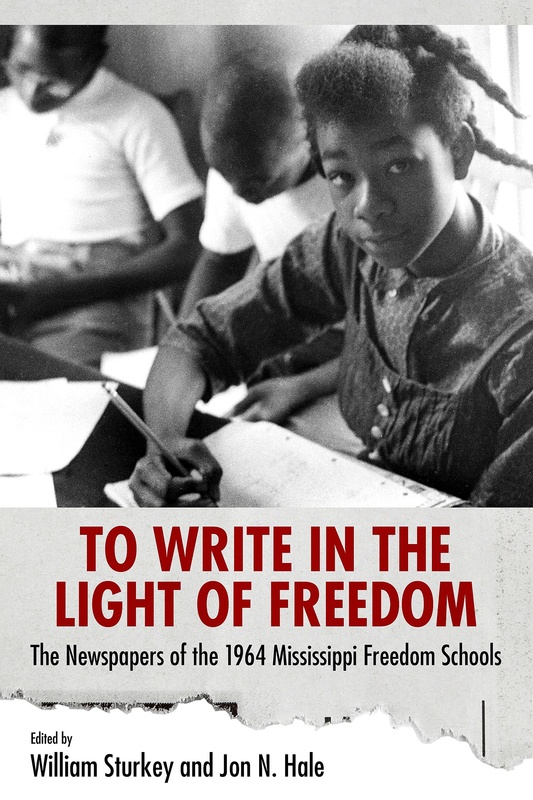
To Write in the Light of Freedom
The Newspapers of the 1964 Mississippi Freedom Schools
Fifty years after Freedom Summer, To Write in the Light of Freedom offers a glimpse into the hearts of the African American youths who attended the Mississippi Freedom Schools in 1964. One of the most successful initiatives of Freedom Summer, more than forty Freedom Schools opened doors to thousands of young African American students. Here they learned civics, politics, and history, curriculum that helped them instead of the degrading lessons supporting segregation and Jim Crow and sanctioned by White Citizen’s Councils. Young people enhanced their self-esteem and gained a new outlook on the future. And at more than a dozen of these schools, students wrote, edited, printed and published their own newspapers. For more than five decades, the Mississippi Freedom Schools have served as powerful models of educational activism. Yet, little has been published that documents black Mississippi youths’ responses to this profound experience.
This unprecedented collection of primary source materials from the Freedom School newspapers will be a powerful teaching tool, particularly for high school and college students.
Sturkey and Hale’s collection of student journalism is a call to consider the social and cultural lives of the authors of these periodicals—it is also a call to action, as the concerns of students of color in 1964 do not sound altogether different from the concerns of young people across the United States today.
Bossie Mae Harring wrote in the Drew Freedom Fighter, ‘Someone has opened our eyes to freedom and we will walk in the light of freedom until we achieve our victory.' Ms. Harring was one of thousands of students attending Freedom Schools in Mississippi, opened in 1964's Freedom Summer to provide an alternative education to the mis-education Mississippi provided for black children. To Write in the Light of Freedom is a collection from the Freedom Schools’ newspapers. In it, you will read the hopes and dreams of Mississippi’s black youth. You will be entranced by their writing and interested in knowing more about Freedom Summer and the Freedom Schools. This is a largely unknown history of perseverance and triumph over great odds. Read on.
The privilege of coordinating Mississippi Freedom Schools in summer 1964 was perhaps the most gratifying experience of my life. . . .What I remember most about the Freedom Schools is the atmosphere of hope.This extraordinary collection of newspapers suggests the spirit that came alive in the schools, and this introduction may be the best short history of the Freedom School adventure.
Mississippi’s Freedom Summer is told as the story of a thousand idealistic white kids who braved racist violence to bring democracy to the Negro, and who were transformed in the process. The story we don’t tell centers on a different revolution—a revolution of the mind. Black kids were the epicenter of America’s most dynamic intellectual ferment in 1964, where the most astute visions of a democratic future and reconstructed past erupted from makeshift Freedom Schools, where a radical print culture came into being that changed the South and the country forever. William Sturkey and Jon Hale have made this rich body of work available for the first time. It is bound to change our story of 1964 and hopefully will change the way we think about the role of social movements, pedagogy, and thought in building a new future.
William Sturkey is assistant professor of history at the University of North Carolina at Chapel Hill. His work has appeared in the Journal of Mississippi History and the Journal of African American History. Jon N. Hale is assistant professor at the College of Charleston in South Carolina. His work has appeared in the Journal of African American History, History of Education Quarterly, South Carolina Historical Magazine, and Journal of Social Studies Research.





